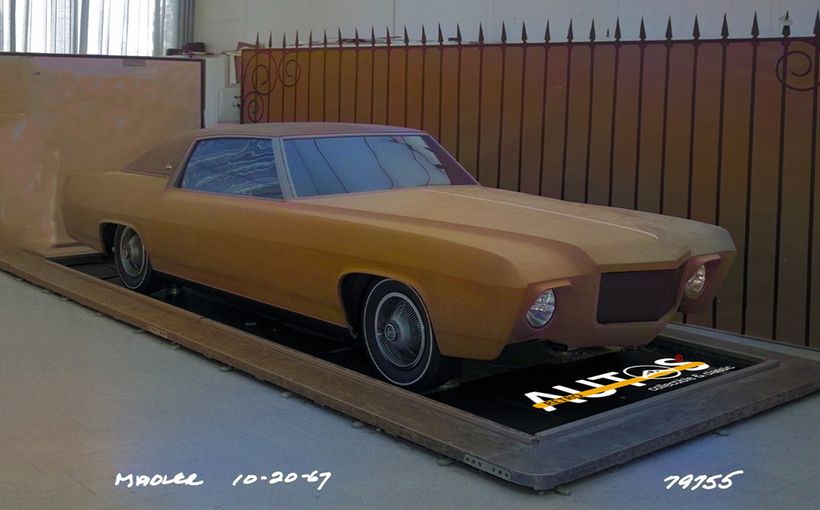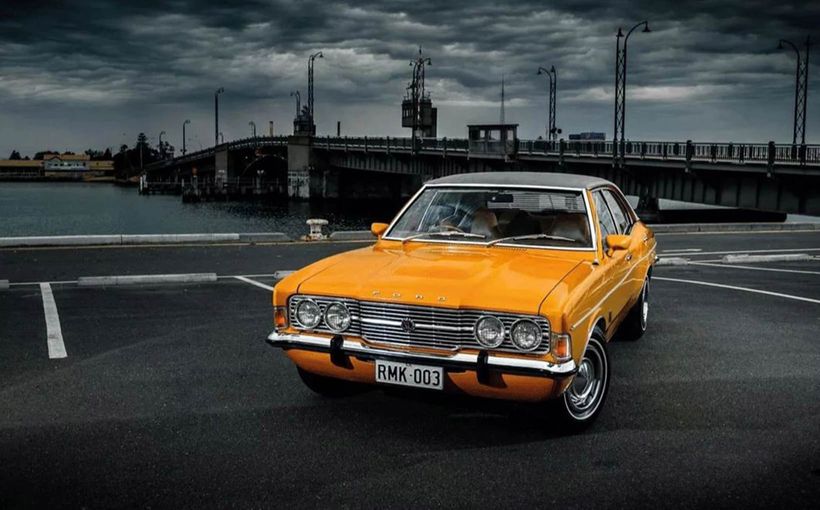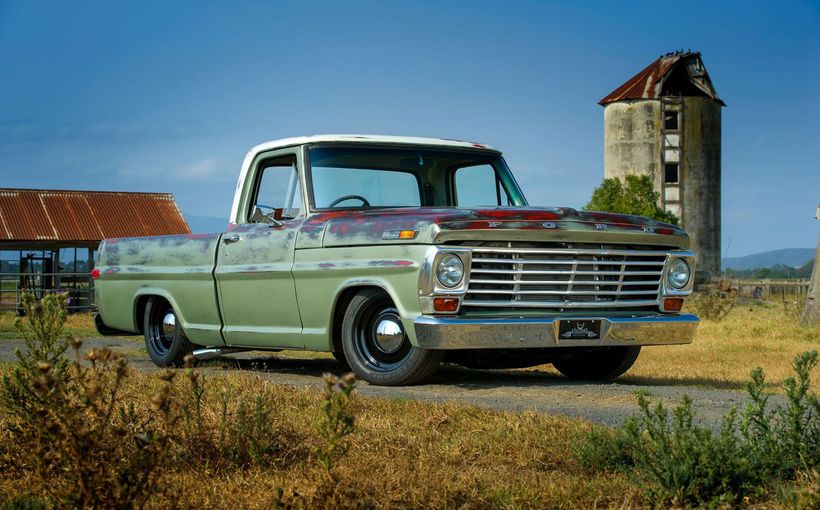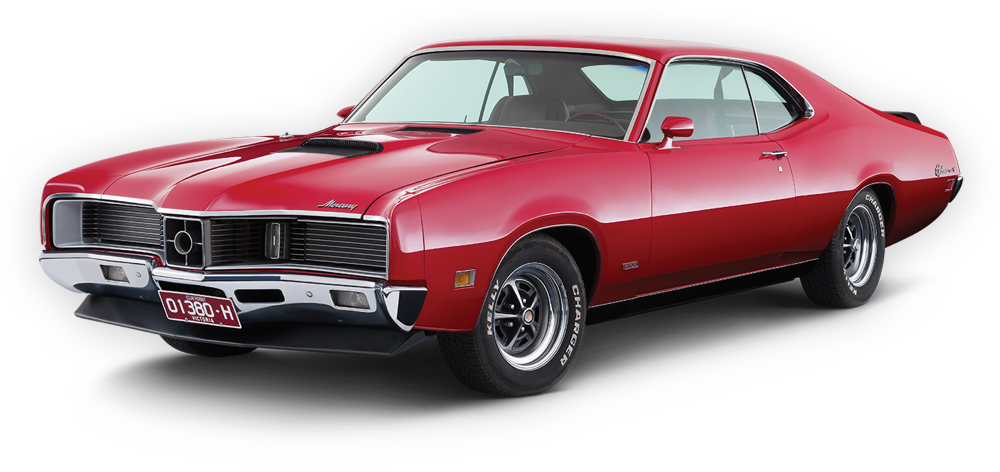Even More Forgotten and Intriguing Fords.

There are many iconic vehicles in Ford’s long history. But there are others which have faded from view. In the June and December 2024 editions of Retroautos® I showcased seven such Fords.
Here are five more intriguing examples from France, Australia, Germany, the USA and the UK.
1948-54 Vedette: French Failure

Since the late 1930s, Ford in the USA had been considering a downsized mainstream car, with wheelbase around 105-108 inches/2667mm-2743mm.
After WWII there was renewed interest in the idea. By mid-1945 the styling was agreed, and Henry Ford II gave his approval for a mid-1948 release. Operational prototypes were constructed, and testing began. The expensive production tooling was created.

But around September 1946 Mr Ford had second thoughts. One of his newly hired executives, Ernest Breech (ex-General Motors), convinced him that small cars equalled small profits. The downsized car was cancelled. A fast-track program was instigated to develop a bigger car, which became the 1949 Ford.
Meanwhile, Ford in France needed a car to sell and the cast-off small Ford seemed like the answer. The tooling was despatched across the Atlantic and it became the 1948 Vedette, powered by Ford’s prewar side valve 2.2 litre V8. But things did not go well.

The Vedette was not a big seller; the factory was plagued with strikes and there were suspicions the financial records were being manipulated to show a rosier view of the operations. From an American perspective, the French market was too much trouble for no reward. The business was sold to Simca in 1954.

That Henry Ford II cancelled the small American Ford was the right decision at the time. Imagine what might have been the company’s fate had it gone ahead, right at the beginning of the era when “longer, lower, wider and more powerful” was the automotive mantra? Looking back now, it was probably one of the most important decisions he ever made.
1968 XT Falcon: A Bit Better In-between

If ever there was a forgotten Australian Ford, it is the 1968 XT Falcon. Although the company’s advertising proclaimed it had “More, More Mustang”, the attention it attracted was subdued compared to the all-new VE Valiant and HK Holden. As Wheels explained in its May 1968 edition:
“Basically, the cars are little changed from the XR. A bit more oomph, a few more safety features and a bit of a re-styling here and there, and that’s about it….It all comes down to a good car made a little better.”

Wheels was right about the styling. Ford in Dearborn had ruled out sheet metal updates for the US Falcon to keep its price low. That left Australia having to develop and fund its own styling direction.
Meanwhile, Jack Telnack, Ford’s new design director, had only arrived in Melbourne in mid-1966, giving him no time to implement anything more than minor alterations. Most were borrowed from the US Falcon. The styling he envisioned had to wait until the XW.

Ford’s brochure tried to make it exciting:
“Bold new grille, sweeping new chrome moulding which extends from the front fender-top to the rear fender-top, new tail-lights and new rear applique.”

Indeed, so few were the changes that it was hard to spot the difference between the XR and XT Fairmont models when seen side on.

It was under the bonnet where noticeable updates occurred. All engines were enlarged and delivered more power. Cubic inch descriptors gave way to litres.

The GT became part of the range, no longer a gold painted limited edition. Said Wheels in its September 1968 edition.
“…a true grand tourer in line with the best British and Continental makers can dish up.”
Winning the team’s prize and finishing 3rd, 6th and 8th in the 1968 London to Sydney Marathon sort of made up for losing to the Monaro’s at Bathurst. But the marathon result did not deliver a “win on Sunday and sell on Monday” outcome. The average monthly sales of the XT were no advance on the XR.

Although a Polar White XT GT was one of the six Falcons showcased on stage at Ford’s 100-year celebrations, the XT’s place in our automotive history is to be the Falcon sandwiched between the “Mustang Bred” XR—a car that established the benchmark for the affordable and better performing Australian family car—and the beginning of Falcon’s transition to the great Australian road car, the XW.


1952 12M Taunus: Saving Ford of Germany

After WWII, Ford in Germany was in a bad way. Its factory had been destroyed by bombing. Ford had to beg other auto companies to build their cars and trucks until its factory was reconstructed.


Despite these problems, the 12M was the first post WWII car in Germany with “modern” styling. Its shape was developed in Detroit alongside the UK’s 1951 Zephyr/Consul. That is why they are look-a-likes, except for the large globe emblem dominating the 12M’s front end.


The downside of the 12M was its lack lustre 1.2 litre 28kW side valve engine, which dated back to the mid-1930s. A 1.5 litre engine was offered from 1954. Ford called it the 15M.
Such was the success of the 12M, by the end of the 1950s German made Fords were being exported, including to the USA. Without the 12M it is doubtful the company would have survived.

1967-71 Thunderbird four door: Enduring Elegance.

Before you read any further, let me share my opinion of the four door T-Bird: It is one of the best-looking American cars of the 1960s.
In the lead up to 1967, Ford had decided to drop the Thunderbird convertible. Volume was down to less than 10% of total T-Bird production because buyers were ordering coupes with air-conditioning. Ford’s accountants were also concerned that future convertibles could not be economically engineered for new roll over regulations. So, what would be its replacement?

Bill Boyer, the Thunderbird design chief, was standing next to Lee Iacocca, vice president of Ford, when the decision was made. In his book Thunderbird. A Design Odessey, Boyer recalls that:
“Lee Iacocca came in (to the design studio) with Gene (Bordinat, Ford’s design boss) one day, and his eyes stopped on a full-sized rendering of the four-door, with a black cherry colour on the lower body and a black vinyl roof gracing the elegant greenhouse…We were not unaware that black cherry and candy apple red were Lee’s favourite colours. ‘Let’s get that one nailed down,’ he said. ‘That’s our convertible replacement.’”
And as Iacocca so decreed, so it came to be.

For me, what is most striking about the four-door are its rear hinged rear doors (copied from the Lincoln Continental), the upper section of which includes part of the rear pillar. This gave the four-door a coupe-like appearance.


During its tenure 77,541 four-doors were produced. That is 28% of Thunderbird volume, much more than the convertible. And yet, the four-door has often been dismissed as not being a “real T-Bird”. A common criticism is that it is just another Ford sedan with lots of options as standard.
Well, not in my book. Think of the T-Bird as an early example of the four-door coupes which now inhabit the dealerships at Audi, Mercedes, Genesis, BMW, Maserati, Porsche and other elite brands. Think of it the way Ford’s PR folk described it:
“We created this car for the few. The few discerning Americans who always loved Thunderbird’s looks, luxury and performance—but longed for 4 doors for easy entering and exiting.”
You can wait around and hope, but you will never see the likes of this car again.

1966-72 Mk IV Zephyr/Zodiac: Little Lincoln
When the Mk IV was in development, Ford UK’s vice president of engineering, Harley Copp, an American, wanted its styling to embrace the long bonnet and short boot theme of the Mustang. The design boss, Don DeLa Rossa, happily obliged.

Copp also extended the Mk IV’s wheelbase to 115 inches/2921mm, which was only an inch/25mm less than the Ford Fairlane. In his book Ford Design in the UK, Nick Hull, speculates that Copp wanted to create a British Lincoln. That’s not a surprise, because Copp had been a key player in the development of the 1956 and 1961 Lincoln Continentals. So had DeLa Rossa.
And another thing. Given that Copp had also been the chief engineer for the first Falcon in the USA (which DeLa Rossa helped style) it is mystery why he ignored the 1966 Falcon and Fairlane, which were already in development, as a base for the Zephyr/Zodiac.

What UK car buyers saw when the Mk IV was released was an ungainly amalgamation of sheet metal, with a bonnet that was too long and boot that was too short. Not only that, the styling made a mockery of the fact the car was engineered to use Ford’s very short V4 and V6 engines. This left considerable empty space between the engine and grille.

And that’s where Copp made another intriguing decision. He located the spare wheel between the engine and radiator. This also increased boot space. Trouble was, despite an all-new independent rear suspension and four-wheel disc brakes, the car’s weight distribution and handling were compromised.

Another styling quirk was painted sheet metal instead of a grille on the Zephyr, making it look like a cheap rear engine car.

During its six-years of production about 150,000 people gave money to Ford for a Mk IV. Its real target however, the affluent “executive” buyer, remained elusive. They gravitated to the more prestigious, better handling and more sensibly sized Triumph and Rover 2000s.
Apart from the Mk IV, Copp had a pivotal role in the development of the TC Cortina, Ford GT40 and the Ford Cosworth DFV race engine. After he resigned from Ford he testified against the company over the Pinto’s fuel tank issue.
DeLa Rossa was a good mate of Lee Iacocca and retired when Iacocca was fired in 1978. When Iacocca went to Chrysler, he hired DeLA Rossa as the company’s design supremo.
The Mk IV’s place in automotive history is that it was the last UK Ford designed solely in the UK. From then on, Ford of Germany played a significant role in styling.

More Forgotten Ford stories.
Forgotten Fords
Retroautos® is written and published with passion and with pride by David Burrell. All stories and images in Retroautos® are copyrighted. Reproducing and/or downloading them in any format is prohibited. Retroautos® is a registered trademark. Reproducing and/or downloading it in any format is prohibited.








